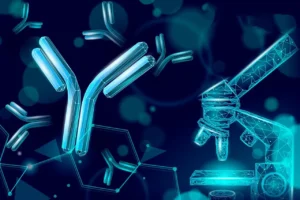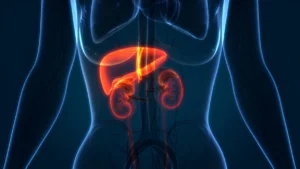Introduction
Extracorporeal photopheresis (ECP) is an emerging immunomodulatory therapy that promotes donor-specific tolerance, reduces alloimmunity, and minimizes the need for long-term immunosuppression in transplant patients. It works by inducing apoptosis in leukocytes, stimulating regulatory T-cell proliferation, and lowering anti-HLA antibodies. Although initial results in acute transplant rejection are promising, evidence in chronic cases remains limited. A lack of reliable biomarkers for patient selection and treatment monitoring poses further challenges. Current research, including EU-funded studies, aims to standardize ECP protocols and establish its role in kidney transplantation.
ECP involves collecting a patient’s white blood cells via leukapheresis, treating them with a photosensitizer (8-methoxypsoralen), and exposing them to UVA light before reinfusion. This process activates monocytes to form tolerogenic dendritic cells that promote immune tolerance and suppress inflammation. Initially used for cutaneous T-cell lymphoma, ECP now serves as an adjunct therapy in heart and lung transplant patients, showing encouraging results in reducing rejection and donor-specific antibodies. The therapy is well tolerated and can be performed through either an off-line or in-line automated system.
ECP as a therapeutic approach for renal transplantation
In kidney transplantation, managing rejection and related complications like infections is vital for graft survival. Currently, antibody-mediated rejection (AMR) is treated using plasma exchange (PLEX) with IVIG, while Rituximab has shown limited success and increased infection risks. AMR—both acute and chronic—remains a key barrier to long-term success, driven by donor-specific antibodies, complement activation, and immune-mediated vascular injury involving T cells, B cells, and innate immune cells.
Extracorporeal photopheresis (ECP) offers potential benefits through immune modulation by increasing regulatory T and B cells, releasing anti-inflammatory cytokines like IL-10 and TGF-β, and suppressing proinflammatory responses. Experimental studies in animal kidney transplants have shown that ECP, combined with short-term tacrolimus, prolongs graft survival and reduces antibody formation. However, human studies remain limited, often small and inconsistent in protocol design, highlighting the need for larger, standardized clinical trials.
ECP prophylactic treatment in kidney transplantation
Two small studies have evaluated ECP in kidney transplant recipients from deceased donors. In pediatric patients, six ECP cycles led to no rejection after 12 months and increased regulatory T cells with reduced TNF-α. In adults, none of the ECP-treated patients experienced acute rejection, while one control patient did. ECP treatment also improved eGFR and increased circulating Tregs and immature dendritic cells after six months, suggesting immune modulation benefits.
Considering the high rejection risk in sensitized patients, a new randomized clinical trial (NCT04414735) was initiated to test ECP with standard immunosuppression versus standard therapy alone. The protocol includes 13 ECP cycles over six months, with higher frequency in the initial weeks. Based on evidence from heart transplant studies and animal models, early and intensive ECP use is expected to improve renal function and reduce acute rejection episodes.
ECP for rejection treatment after kidney transplantation
ECP in kidney transplantation has shown an increase in regulatory T cells and a reduction or stabilization of Th17 cells, along with decreased IL-6 in responders. Some patients with antibody-mediated rejection (AMR) also experienced a reduction or clearance of anti-HLA antibodies, though results varied. Studies show improved graft survival in certain cases, but ECP tends to be less effective when renal function is already poor or treatment is started late. The largest retrospective study reported 61% graft survival at 12 months, with poor outcomes in patients dependent on dialysis or receiving fewer ECP sessions.
Combining ECP with plasma exchange (PLEX) or IVIG has yielded encouraging results, improving graft stability and reducing antibodies. ECP also appears to have anti-inflammatory and antifibrotic effects at the tissue level. However, inconsistent study designs and lack of reliable biomarkers limit its clinical application. To improve outcomes, early initiation and sufficient ECP dosing are critical. For managing acute AMR, an add-on regimen similar to that used in lung transplantation is suggested—two cycles weekly for two weeks, followed by one cycle weekly until week eight, then every two weeks until week twelve if kidney function remains impaired.
ECP in the management of recipients of kidney transplants with concomitant viral infection
ECP offers a major advantage in kidney transplant recipients with viral infections, as it can reduce the need for strong immunosuppression without increasing the risk of rejection. This makes it especially useful in patients with infections or cancer. Previous heart transplant studies showed that ECP lowered cytomegalovirus (CMV) DNA levels significantly.
In kidney transplant cases, small reports have shown promising antiviral effects — one patient with BK virus had a 90–99.9% reduction in viral load during ECP therapy, though levels rebounded after stopping treatment. Another patient with CMV infection achieved a 99% viral load reduction within three weeks of ECP combined with valganciclovir and rapamycin, reaching complete clearance by three months.
Conclusion
ECP shows promise as an effective immunomodulatory therapy in kidney transplantation with minimal side effects. It helps suppress T-cell activity, reduce donor-specific antibodies, and limit inflammation at the graft site. However, its success is limited in patients with advanced organ dysfunction, indicating that ECP works best when used early or preventively rather than for refractory rejection.
Despite encouraging results, research remains limited and inconsistent. There is still no standardized protocol or reliable biomarkers to guide patient selection and monitor outcomes. To overcome these gaps, the exTra consortium aims to conduct large, multicenter trials to establish clear guidelines and standardize the use of ECP in solid organ transplantation.
References
1. Edelson R, Berger C, Gasparro F, et al. Treatment of cutaneous T-cell lymphoma by extracorporeal photochemotherapy. Preliminary results. N Engl J Med. 1987;316:297–303.
2. Stępień J, Eggenhofe E. ECP induced apoptosis: how noninflammatory cell death counterbalances ischemia-reperfusion injury. Transplant Direct. 2025;11:e1816.
3. Morgando I, Vinnakota J, Zeiser R. Extracorporeal photopheresis: from animal models to clinical practice. Transplant Direct. 2025;11:e1824.
4. Girardi M, Berger CL, Wilson LD, et al. Transimmunization for cutaneous T cell lymphoma: a phase I study. Leuk Lymphoma. 2006;47:1495–1503.
5. Legitimo A, Consolini R, Failli A, et al. In vitro treatment of monocytes with 8-methoxypsolaren and ultraviolet A light induces dendritic cells with a tolerogenic phenotype. Clin Exp Immunol. 2007;148:564–572.
6. Garcia-Almeida J, Heger L, Hackstein H. Extracorporeal photopheresis: soluble factors that promote immunomodulation. Transplant Direct. 2025;11:e1840.
7. Gatza E, Rogers CE, Clouthier SG, et al. Extracorporeal photopheresis reverses experimental graft-versus-host disease through regulatory T cells. Blood. 2008;112:1515–1521.
8. George JF, Gooden CW, Guo WH, et al. Role for CD4+CD25+ T cells in inhibition of graft rejection by extracorporeal photopheresis. J Heart Lung Transplant. 2008;27:616–622.
9. Benazzo A, Bagnera C, Ius F, et al. A European multi-center analysis of extracorporeal photopheresis as therapy for chronic lung allograft dysfunction. Transpl Int. 2024;36:11551.
10. Barr ML, Meiser BM, Eisen HJ, et al. Photopheresis for the prevention of rejection in cardiac transplantation. N Engl J Med. 1998;339:1744–1751.





